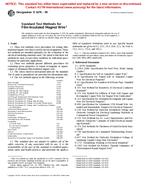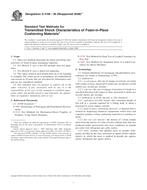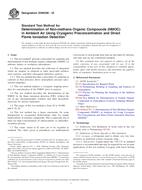1.1 The purpose of this classification system is to provide a method of adequately identifying PMMA materials using a system consistent with that of Classification System D 4000. It further provides a means for specifying these materials by the use of a simple line callout designation.
1.2 This classification system covers poly(methyl methacrylate) molding and extrusion compounds. These compounds are polymers based on methyl methacrylate, and at least 70 % of the polymer shall be polymerized from methyl methacrylate.
1.3 The properties in this classification system are those required to identify the compositions covered. There may be other requirements necessary to identify particular characteristics important to specific applications. These shall be described by using the suffixes as given in Section 5.
1.4 Acrylic molding and extrusion compounds are used frequently in applications where extreme clarity and the ability to retain that clarity and color under severe weathering and other environmental exposures are of primary significance. While the test specimen properties of this document may be used to evaluate nonvirgin materials, the user should take precautions to ensure that parts made from these materials meet the desired end-use requirements. Accordingly, this specification allows for the use of those acrylic plastic materials that can be recycled, reconstituted, and regrounded provided the following:
1.4.1 The requirements as stated in this specification are met,
1.4.2 The material has not been modified in any way to alter its conformance to food contact regulations or similar requirements, and
1.4.3 The requirements of the particular end-use application are met.
1.5 This classification system and subsequent line callout (specification) are not intended for the selection of materials, but only as a means to call out plastic materials to be used for the manufacture of parts. The selection of these materials is to be made by personnel with expertise in the plastics field in which the environment, inherent properties of the materials, performance of the parts, part design, manufacturing process, and economics are considered.
Note 1 – This classification system is similar to ISO 8257-1:1987 in title only. The technical content is significantly different.
1.6 The values stated in SI units are to be regarded as the standard.
1.7 This standard does not purport to address all of the safety concerns, if any, associated with its use. It is the responsibility of the user of this standard to establish appropriate safety and health practices and determine the applicability of regulatory limitations prior to use.
Product Details
- Published:
- 01/01/1996
- Number of Pages:
- 6
- File Size:
- 1 file , 32 KB


